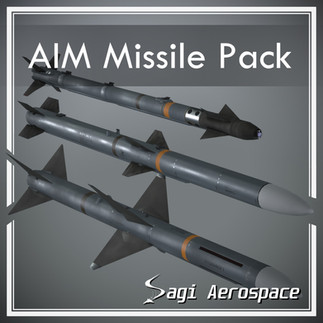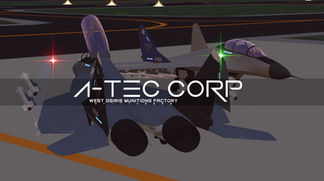VRChat Aviation: Addressing the Aircraft Model Predicament
- Aaron "Ribbon-Blue" Mendoza

- Jul 19, 2023
- 5 min read
Updated: Nov 13, 2023
Proactive changes to secure the future of this aviation platform

While I haven't mentioned it here on Skyward Flight Media in quite some time, VRChat Aviation (VRCA) continues forward. Some of the highlights since we last discussed VRCA are worthy of their own article, suitable for a third year of VRCA overview article in the near future. Now, three years after the release of the universal Sacc Flight System, the landscape of this international community of flight enthusiasts continues to ebb and flow. Recently, a group of close friends and I visited Virtual Market 2023 Summer, a seasonal event that features both user created media and prominent real world brand presence from highly recognizable companies. Even at this event, VRCA was present to a certain degree.
The Virtual Sky Service, an organization that offers a realistic aviation experience focusing mainly on commercial aircraft, had a commercial playing on a billboard in the market's Connect hub. The latest upcoming product from Shimotsuki Heavy Industries was on display with a cockpit attendees could sit in to preview their upcoming aircraft model based on the Northrop YF-23A. Seeing VRChat aviation at such an event compounded with a recent change that is occurring in a large part of the community right now is what inspired me to discuss today's topic.
Non-Commercial Status Quo
Since its launch on January 16th, 2014, VRChat has operated as an open-ended, easy to access, relatively easy to create for platform that has allowed users to utilize content from wherever they choose to import it from for personal use. The average social experience includes trips to worlds based on established intellectual properties (IP), users donning avatars of their favorite personalities and so on - for the sake of just having a good time. No form of currency is required. It is very no harm, no foul. This norm applies to all communities on the platform, including the VRCA community.
A quick trip to a handful of worlds over the years show world creators utilizing aircraft models from known IPs with hands on work done to animate them and adjust their flight characteristics to match that aircraft's real world performance to varying degrees. As this has all been done in a noncommercial manner, it aligned with the status quo of this virtual social platform as a whole.
Proactive Changes
In the last week of June 2023, the VRC Black Aces - the most prominent community of VRChat aviation - announced that it would address the use of aircraft models from established IPs featured in worlds that creators affiliated with them have produced. Taking any potential claim of copyright or license infringement seriously, they have launched a large scale effort to ensure the stable future of VRChat aviation. As an example of how serious they are taking the situation, some of the most well known flight worlds were promptly made unavailable or updated with more appropriate aircraft models. Being that they are the leading organization within this genre of VRChat over time their actions will set a trend that naturally others will follow. In this case, emulation of their actions is a very positive thing.
Within the past three weeks, many solutions have been found. They can be categorized into three avenues of approach.
Securing Licensing
A majority of the most beloved flight worlds use existing or retired military and civilian aircraft. Grumman F-14 Tomcats blasting off an aircraft carrier into sunset soaked skies, SAAB Drakens and Viggens darting at low altitudes across vast forests and well known fourth generation fighters in swirling air combat above the searing desert. While these models were often sourced from various IPs, many are now undergoing a two-step replacement process.

First, comparable aircraft models are being secured from 3D asset stores, like Sketchfab or Booth. This purchase both supports creators outputting these models and secures proper licensing for legal protection in the future, rather than just relying on understanding and good will. Second, the creators still need to prepare the asset. Depending on the quality of asset purchased, there is still plenty of work to do before it, it is ready for public use. Flight surfaces will need to be animated, cockpit interiors remodeled or modified in some way to support SaccFlight standard control displays, flight values will need to be applied to the model then flight tested before use. There is a certain level of quality these creators hold themselves to, especially since their names are on this project and any user on VRChat can access their profile, see the worlds they've created and go there to see their work in action for themselves.
It is good to know that the people that have taken up the mantle of supporting and expanding VRCA hold themselves to a certain level of quality, even after the conscious decision to now invest more time in creating aircraft models rather than focus on the volume of aircraft that could be produced in a certain time span.
Existing VRCA Asset Manufacturers
Contrary to the current situation, VRCA started with original aircraft designs. Even during the early testing phases in 2020. The now community iconic SF-1 fighter was followed by other original designs created by a designer using the umbrella name of Sagi Aerospace. Since then, there have been many solo designers and teams of designers creating all manner of assets specifically for VRChat aviation. The most prolific asset are of course aircraft of varying levels of sci-fi inspiration, Cold War inspiration and just recreation of existing aircraft for the sake of not using a model owned by a different IP. However, it is also possible to buy civilian aircraft, ground crew uniforms, helmets, aircraft carriers, flight instruments, missiles, etc. The names of these pseudo manufacturers include Eriohs Electric Industrial, Tububam Technologies, A-TEC Corp, Esnya Arsenal and Aircraft Laboratory, Laplus AAMTC, Studio Symphony, Nameko Heavy Industries, Akagu Heavy Industries and many others. Our own original aircarft design, The Dragonfly, being among them. These creators are now well ahead of the curve with this current situation.
Reinvigorated Designers
In a way, this need to now source or create aircraft models has also applied pressure to the now well established VRCA developers to use their skill sets to build aircraft in 3D computer software manipulation programs like Blender externally and internally, then animate them in Unity. While it is surely inconvinent for them in the short term, it is not as though they do not have the skill sets to surmount this hurdle. Rather, there has just not been a pressing need to do so because of the pre-established culture of the platform, as mentioned earlier in this article. I myself have seen creators that have modeled aircraft from scratch over a year ago but haven't done so since then, suddenly spend hours in Blender preparing entirely new designs or working on any of the aforementioned assets in reasonably short amounts of time to not delay upcoming events and keep VRCA worlds available for the general public. With their creativity now stoked back to 100% effort, it is possible that even more unique designs or recreations of unusual real world aircraft could appear by the end of the year. It is an interesting prospect.
Seeing the VRChat aviation community now address what could potentially be a massive legal problem in the future is, in my eyes, a heartening event. Of course, I say this as an observer who does not need to put in hours of work myself, but I felt as though their new effort needed to be discussed as my own way to show support for their latest endeavor.

About the Writer

Co-founder of Skyward Flight Media. After founding Electrosphere.info, the first English Ace Combat database, he has been involved in creating flight game-related websites, communities, and events since 2005. He explores past and present flight games and simulators with his extensive collection of game consoles and computers.











































































.png)